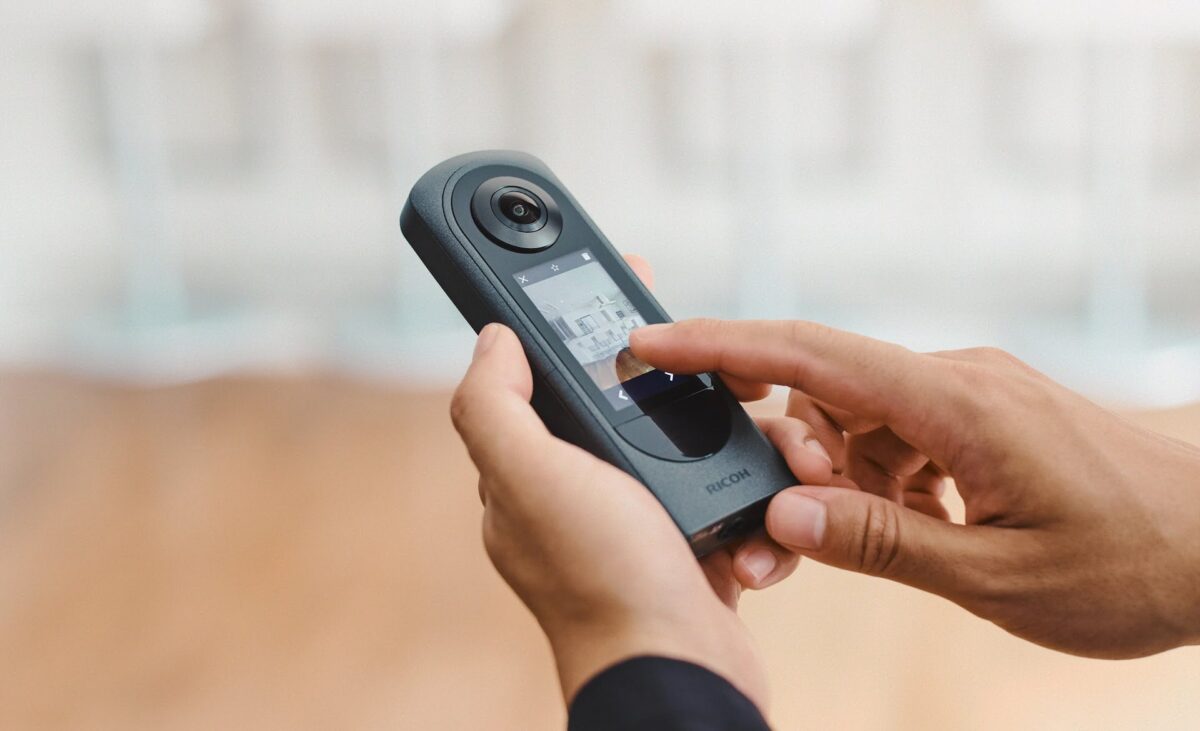VR cameras in 2022: Expectation and reality diverge

It's been many years since the first VR cameras hit the market. The technology has hardly evolved since then. Why?
These days, Ricoh introduced a brand new 360-degree camera for consumers: the Ricoh Theta X. The device improves handling over previous models. It has a touch display built-in, which allows operation and follow-up control directly on the device, as well as a replaceable battery and memory card.
In terms of technical improvements, the manufacturer promises new sensors for high-resolution shots in the 360-degree format: up to 11K in photos and up to 5.7K in videos, the latter at 30 frames per second.
VR camera comparison - old vs. new
These numbers alone don't say much. What counts is how the image looks under the VR headset.
VR vlogger Hugh Hou took the trouble to test the new 360-degree camera (see below) and compare it with other devices in this price segment. His 360-degree video allows you to compare the image quality with a Meta Quest 2 to get your own impression. I explain how to do that at the end of the article.
The result is sobering, and that applies to all devices, not just the Theta X. The image is blurry across the board, and you can see the transitions where the two 180-degree spheres were stitched together.
Hugh Hou himself sums up that little has changed visually compared to older 360-degree cameras. Nevertheless, at around 1,000 euros, the Theta X is significantly more expensive than some of the competitors' devices.
Why is the development of VR cameras hardly progressing?
Even for half this price, many consumers might wonder whether the investment is worth it. Six years after the Samsung Gear 360, consumers are still forced to choose between blurry and blurrier.
This also applies to professional devices: The Canon EOS R5 with a stereoscopic 180-degree lens delivers a much more coherent, but far from perfect picture. And that at a price of 6,000 Euros.
You can't blame the manufacturers for this, on the contrary. We should be thankful that after a long dry spell, there is more investment in VR cameras and new devices are coming onto the market. At the height of the VR hype from around 2016 to 2018, we could marvel at new devices almost every week. Meta, then still Facebook, also invested in the Surround 360 volumetric 3D camera. The project fizzled out.
The reason: virtual reality continues to be a niche. Only a small group of people own VR goggles, and even fewer see the appeal of immersive photos and videos and buy VR cameras. Accordingly, it is difficult to finance the research and development of special VR cameras. VR-specific sensors would be needed for a technical breakthrough.
The fact that new cameras are currently coming onto the market at all is probably due to the success of the Meta Quest 2. The more VR goggles make it into households, the bigger and more relevant the market for VR cameras will become.
In order for the immersive image and video formats to become established, there not only needs to be widespread use of high-resolution VR glasses and powerful VR cameras, but also the possibility of sharing the 360 and 180 videos as loss-free as possible, i.e. a YouTube for VR content, only without the strong YouTube compression. As you can see, there is still a long way to go.
Watch the 360-degree comparison video with Meta Quest 2.
House's comparison videos (best consumer 360-degree cameras, best 180-degree cameras) are best downloaded from Oculus TV, since YouTube VR compresses the videos more. Proceed as follows:
- Open the corresponding media entries (1, 2) in the browser and click on "Watch later".
- Launch Oculus TV and switch to the "Saved" tab. Here you should see the videos.
- For the videos, select the three dots, then "Save in high quality" and finally "Cache". You may be prompted to give permissions for caching.
- If you have done everything correctly, the respective movie will be downloaded in the best quality. This version has a higher resolution than the streamed version.
- Once the download is complete, select "Your media" in Oculus TV. After the download, the episode should appear here under "Cached media".
- If you want to delete the episode from the device, select the three dots again, then "Delete from cache" and finally "Delete".
Read more about VR Movies:
- Meta Quest (2): In this VR movie you talk to the characters
- VR movie Namoo: Watch the Oscar contender with Quest (2)
- Meta Quest 2: Best Free Games, Apps and Movies
Note: Links to online stores in articles can be so-called affiliate links. If you buy through this link, MIXED receives a commission from the provider. For you the price does not change.